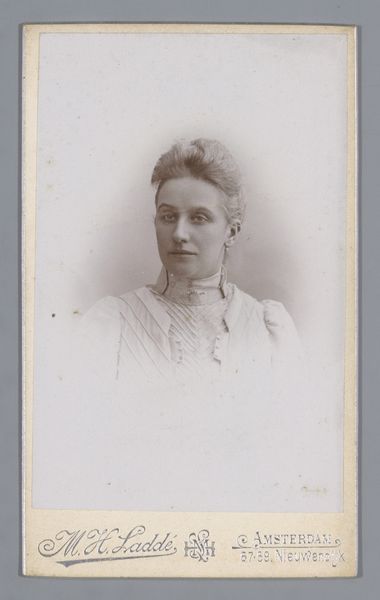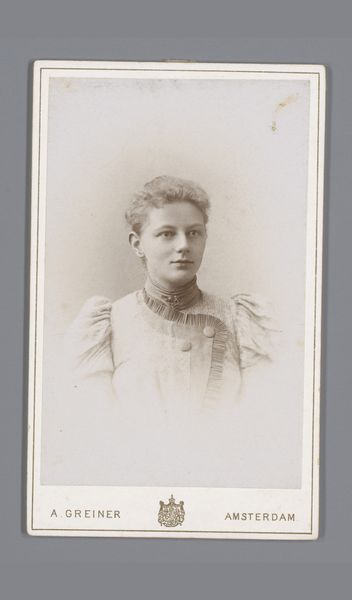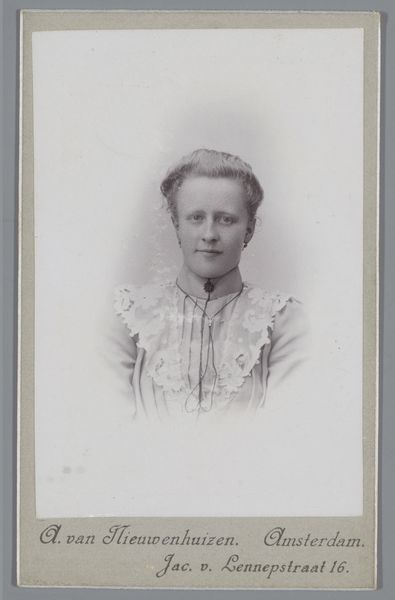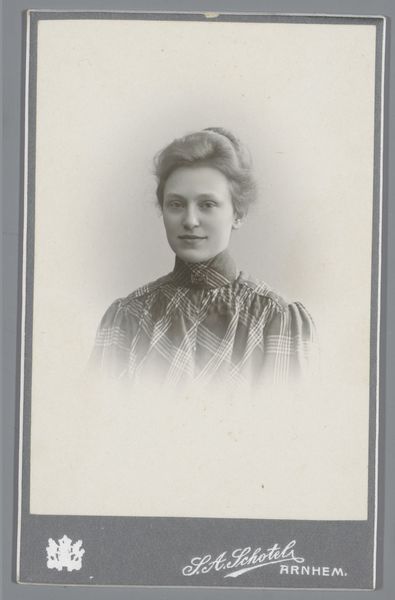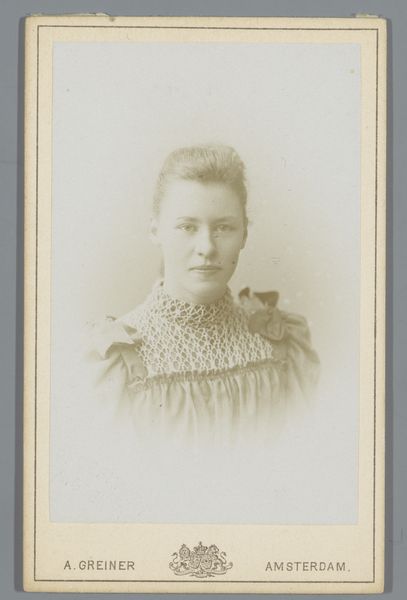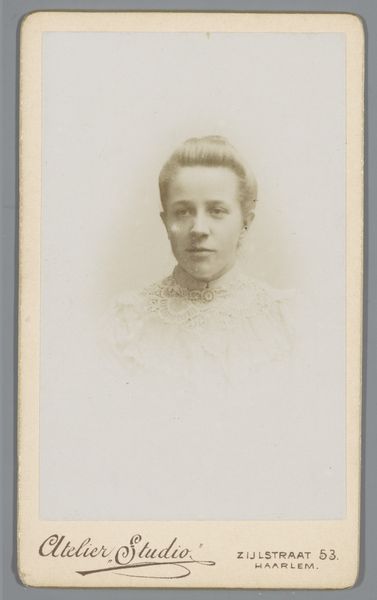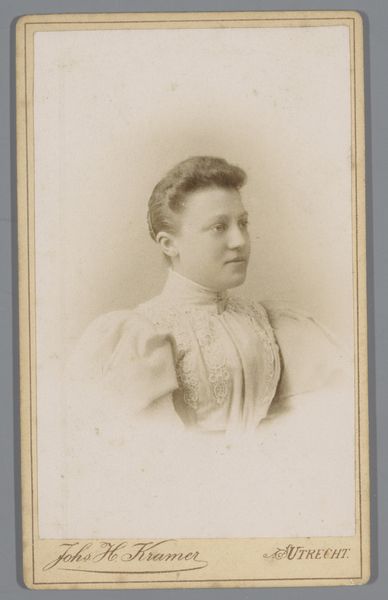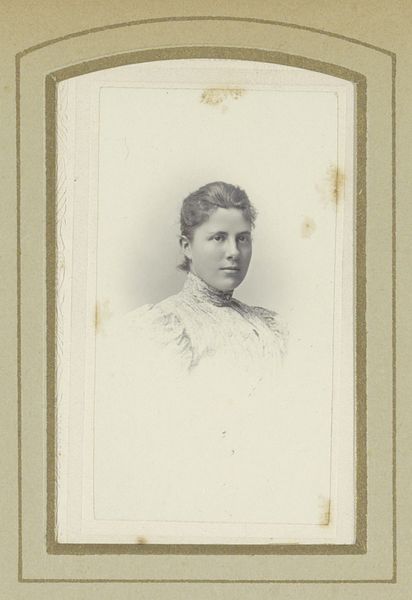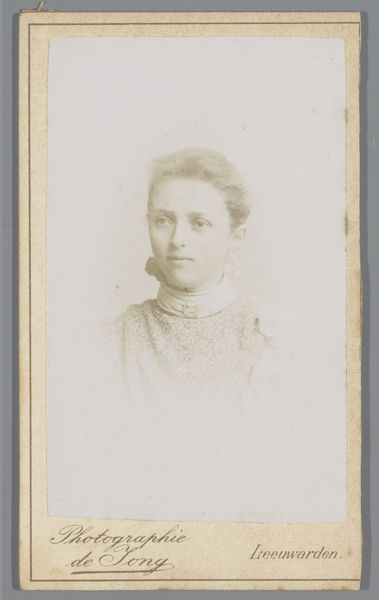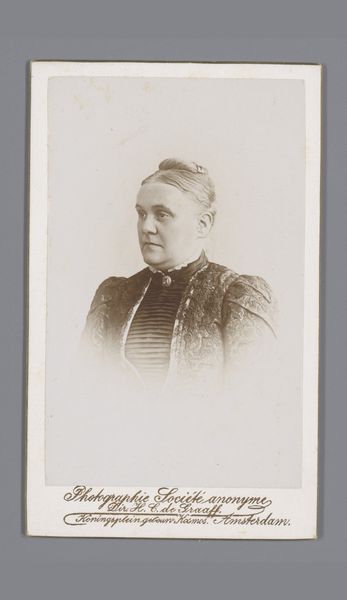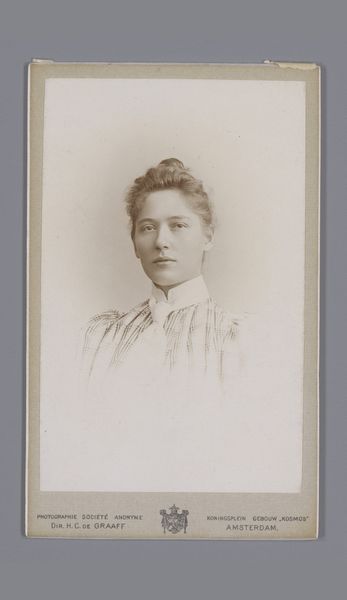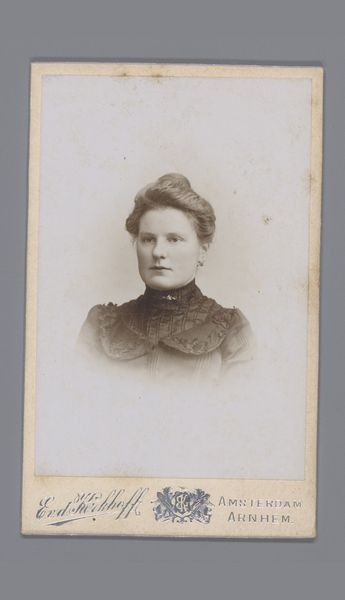
photography, gelatin-silver-print
#
portrait
#
photography
#
gelatin-silver-print
Dimensions: height 110 mm, width 65 mm
Copyright: Rijks Museum: Open Domain
Editor: This is a gelatin-silver print titled "Portret van Christina Maria Lucie Langhout," created sometime between 1874 and 1887 by Albert Greiner. The photograph feels so still and composed, almost serene. What stories or symbols do you see within this portrait? Curator: This stillness, as you call it, Editor, echoes more than serenity; it speaks to a deliberate presentation. The ruffles at the neck act as a visual echo chamber, framing the face. Notice the direction of the subject's gaze. Where does it lead us? Editor: It feels like she's looking slightly off to the side, but not directly at anything. Maybe into her own thoughts? Curator: Perhaps. Or perhaps towards a future unseen to us, the viewers. Early photography held a unique position; it was capable of capturing likeness but also aspired to elevate the sitter, imbuing them with a sense of permanence. That pin at her collar could be family insignia, speaking of heritage. Do you get a sense of societal expectations based on the limited palette? Editor: Definitely, the monochromatic tones mute any sense of vibrancy. It brings to mind established norms and maybe even constraint. Does this inform our perception, especially knowing that colors were later added to photos? Curator: Precisely! Our memory of this era is already filtered through countless later representations. So, returning to the visual rhetoric, what would you say the cumulative effect is? What’s being communicated about her societal position through composition? Editor: The formal composition and attire signal a level of respectability. Yet her direct gaze avoids being overly demure, perhaps suggesting inner strength or intellect. It makes me consider how posed photographs reflected and shaped one’s identity in that period. Curator: Indeed, photography served as a powerful tool in crafting and conveying a family’s and individual’s status. It makes one ponder about identity as an active process, even back then. Thanks for those astute observations!
Comments
No comments
Be the first to comment and join the conversation on the ultimate creative platform.
